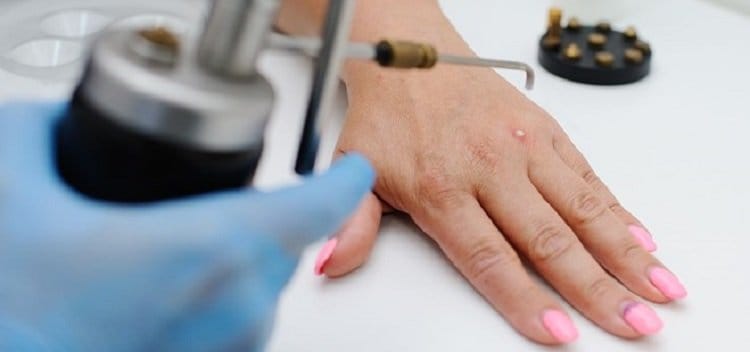Have you ever noticed a small hard and rough lump on your skin? If yes, then you should beware that it might be a skin disease known as a wart. A virus known as Human Papillomavirus, more commonly called HPV, is the most common cause responsible for warts. When the virus enters your system, the result may be an appearance of warts on any part of the body.
If you are interested in professional wart removal, you should know that there are several methods for wart removal: curettage, electro-surgery, cryotherapy, and laser surgery. In all the surgical methods, the dermatologist usually numbs the affected area and then treats it for warts.
Curettage
Curettage means that the doctor will cut out the wart and its roots with a sharp knife or small, spoon-shaped tool. You will need to return to the clinic one to four weeks after the surgery for an inspection of the treated area.
The doctor will decide thereafter, whether a second round of surgery is required or not. This process will continue until the wart is fully removed. It seems simple enough but it actually isn’t. You should not try it at home. Otherwise, you might end up having severe infection and unbearable pain.
Electro-surgery
Electro-surgery is a method that burns off warts using a high-frequency electric current. As the electric charge passes through the tissue it dries out the wart and burns it away.
The reason so many people opt for Electro-surgery is that the results come almost immediately. Electro-surgery is particularly effective on thin warts on the face and limbs. However, Electro-surgery can only be used effectively on single warts or a group of few warts, not on large areas where clusters of warts are located. The procedure can possibly leave scar tissue behind.
Cryo Therapy
In Cryo therapy, the dermatologist freezes the wart off. For this, he uses liquid nitrogen. This substance is extremely cold and destroys the cells in the top layer of skin. There are different ways of applying the liquid nitrogen. It’s usually done by dipping a cotton ball in the liquid and holding it against warts for several seconds.
Your dermatologist will repeat the treatments several times, with breaks of at least one week between each session. Sometimes the doctors also spray the nitrogen on warts to get rid of it.
Laser surgery
Laser treatment involves blasting warts with pulses of high-intensity lasers to burn off and destroy wart tissue. The treatment should be done in the dermatologist’s clinic, under his eyes. This surgery is usually used to remove verruca.
There are two kinds of lasers that used for wart removal. The first one is a pulsed-dye laser, the second one a carbon dioxide laser. Pulsed-dye is the main type of laser used to remove warts. The light heats up the blood in the tiny vessels inside the wart and destroys the vessels. Without bleeding, the wart dies and falls off.
Carbon dioxide laser is as effective as a sharp knife. It might be a good choice if your warts are around your fingernails or toenails and other treatments haven’t worked. First, your doctor will use the laser to cut away the top of the wart. Then she’ll make the light less focused and burn away the rest. It is not a commonly used method, because there are more chances of scars with this laser rather than the pulsed-dye laser.
Takeaway
Your dermatologist will examine the wart first and then decide which treatment is applicable. If you find warts on your body irritating and you want to remove it, you should look for a skin specialist. Trying to remove warts at home can be painful and potential dangerous. Make sure you read all wart treatment options to make an informed decision about the course of your treatment.


